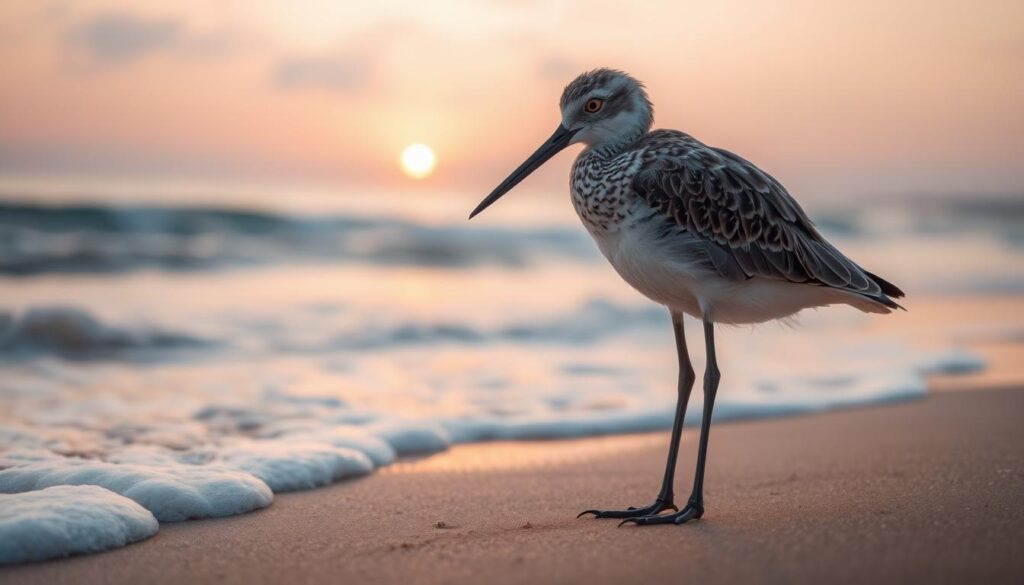Fascinating World of Curlews
Curlews are a fascinating and cryptically colourful group of shorebirds with extremely long, slightly curved bill. These interesting birds are distributed in a broad spectrum of coastal and terrestrial sites across the global. These animals have important roles in these ecosystems.
The following article will, therefore, discuss the outstanding characteristics, conduct, and environments of these exceptional birds. We will also make our stand on what ought to be done to protect their populations that are facing a threat of extinction.
What are Curlews?
Curlews are shorebirds found on every continent except Antarctica. They have long, curved bills. These bills help them find food like insects and small animals in the soil and water.
MORE READ: Gang Gang Cockatoo: Australia’s Unique Bird Species

Add Your Heading Text Here
Status
Winter visitor to wetlands throughout Ireland, as well as breeding in small numbers in floodplains and boglands. Numbers and range have declined substantially in recent decades. It is likely that increased afforestation and agricultural improvement are responsible for these declines.
Identification
The largest wader – very distinctive with long legs, bulky body, long neck and long decurved bill. Fairly uniform greyish brown, with bold dark streaking all over. Only likely confusion species is the smaller Whimbrel, which occurs in spring and autumn.
Voice
Unmistakable ascending “cur..lee, cur..lee” whistle, or sometimes “cew, cew, cew”. Song in breeding season a long, rapid bubbling repetition of a single note.
Diet
They feed mostly on invertebrates, particularly ragworms, crabs and molluscs. They are usually well dispersed across the estuary while feeding, but roost communally, usually along salt marshes and sand banks.
Breeding
Nests on the ground in rough pastures, meadows and heather. Not a common breeder, but found in most parts of the country.
Wintering
Winters in a wide range of wetland habitats (coastal and inland) and other good feeding areas including damp fields. The Irish breeding population is supplemented by Scottish and Scandinavian breeders in winter.

The Importance of Curlew Conservation
Many curlew species are facing big threats to their survival. Habitat loss, climate change, and human disturbance are major challenges. But, there are efforts to protect these birds and their habitats.
Threats Facing Curlew Populations
Habitat loss is a big threat to curlews. Development and urbanization have destroyed their homes. Climate change also makes things harder for them.
Conservation Efforts and How You Can Help
Today many conservation groups and governments are in a careful effort to save curlews. Work in wildlife conservation includes rehabilitating habitats, survey the populations, and raise public awareness. This in a way helps the organization to create awareness on curlew conservation.
People can all get involved and one way is by engaging in citizen science and reporting any sighting. Escalating curlews or the organizations that protect them is also another reason.
Altogether, it will be seen that many interests are involved and only through cooperation can curlews be saved. This is equally as important as saving natural landmarks and also shields environments. Let our generations inherit beautiful sceneries and preserve them into fore coming generations.
Conclusion
Well, you know the curlews have really surprised us. They let us see a beautiful world, different house, and particular ways of life. Such shorebirds are, for instance, have problems like loss of habitat and disturbance by human beings. Yet if communities unite and work for it, we can ensure they remain in the wetlands and by the sea for years to come.
Incurlews man can absorb and love them and thus become instrumental in conserving the species and their habitats. If you like birds and their observation or you simply like nature, your contribution is more than welcome here. It can alter lives of such wonderful birds.
That is why let us continue exploring, advocating for their protection, and just being happy when seeing them in the wild. Together we can stop the killing of curlews and ensure that they bring better prospects to our living.
FAQ
What are curlews?
Curlews are fascinating shorebirds with long, curved bills. They live on every continent except Antarctica. You can find them in coastal and inland wetlands.
What are the unique physical characteristics of curlews?
Curlews have long, curved bills for finding food in soil and water. They also have a big body and long legs. These features help them move around in wetlands.
What are the different species of curlews and where can they be found?
Famous curlew species include the Eurasian Curlew and the Whimbrel. You can find them in coastal and inland wetlands. Places like mudflats, saltmarshes, and grasslands are their homes.
What adaptations do curlews have that allow them to thrive in their habitats?
Curlews have special adaptations like their long bills and migratory journeys. These help them survive in their environments.
What threats are curlew populations facing, and what conservation efforts are underway?
Curlews face threats like habitat loss and climate change. Conservation efforts include restoring habitats and monitoring populations. Birdwatchers can help by joining citizen science projects and supporting protection efforts.






